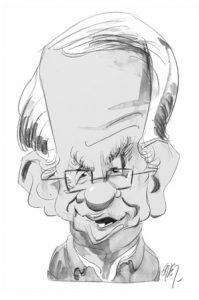Sheldon Lee Glashow in Inference Review:
 This is the third and final essay in a three-part series. Parts one and two told of the development of the physical sciences from ancient times to the discovery of relativity and quantum mechanics in the first quarter of the twentieth century. This part begins with the challenges posed by the atomic nucleus. Two forces of nature had been recognized, gravity and electromagnetism, but two more would needed to understand nuclear phenomena: a strong force to bind nucleons into nuclei, and a weak force to explain how they decay.
This is the third and final essay in a three-part series. Parts one and two told of the development of the physical sciences from ancient times to the discovery of relativity and quantum mechanics in the first quarter of the twentieth century. This part begins with the challenges posed by the atomic nucleus. Two forces of nature had been recognized, gravity and electromagnetism, but two more would needed to understand nuclear phenomena: a strong force to bind nucleons into nuclei, and a weak force to explain how they decay.
In this part, I describe the Standard Model of particle physics, which encompasses three of the four forces of nature. Gravity seems to play no role in the subatomic world. The strong force results from a gauge theory based on an unbroken SU(3) symmetry called quantum chromodynamics, the weak and electromagnetic forces from a broken SU(2) × U(1) symmetry. Together they form the Standard Model of particle physics, offering a complete, correct, and consistent description of all known elementary particle phenomena. Its formulation, unlike the theories of Isaac Newton and Albert Einstein, depended on the work of thousands of physicists and engineers and the generosity of many governments. Triumph though it is, for reasons both experimental and theoretical, the Standard Model is known to be incomplete.
More here.
